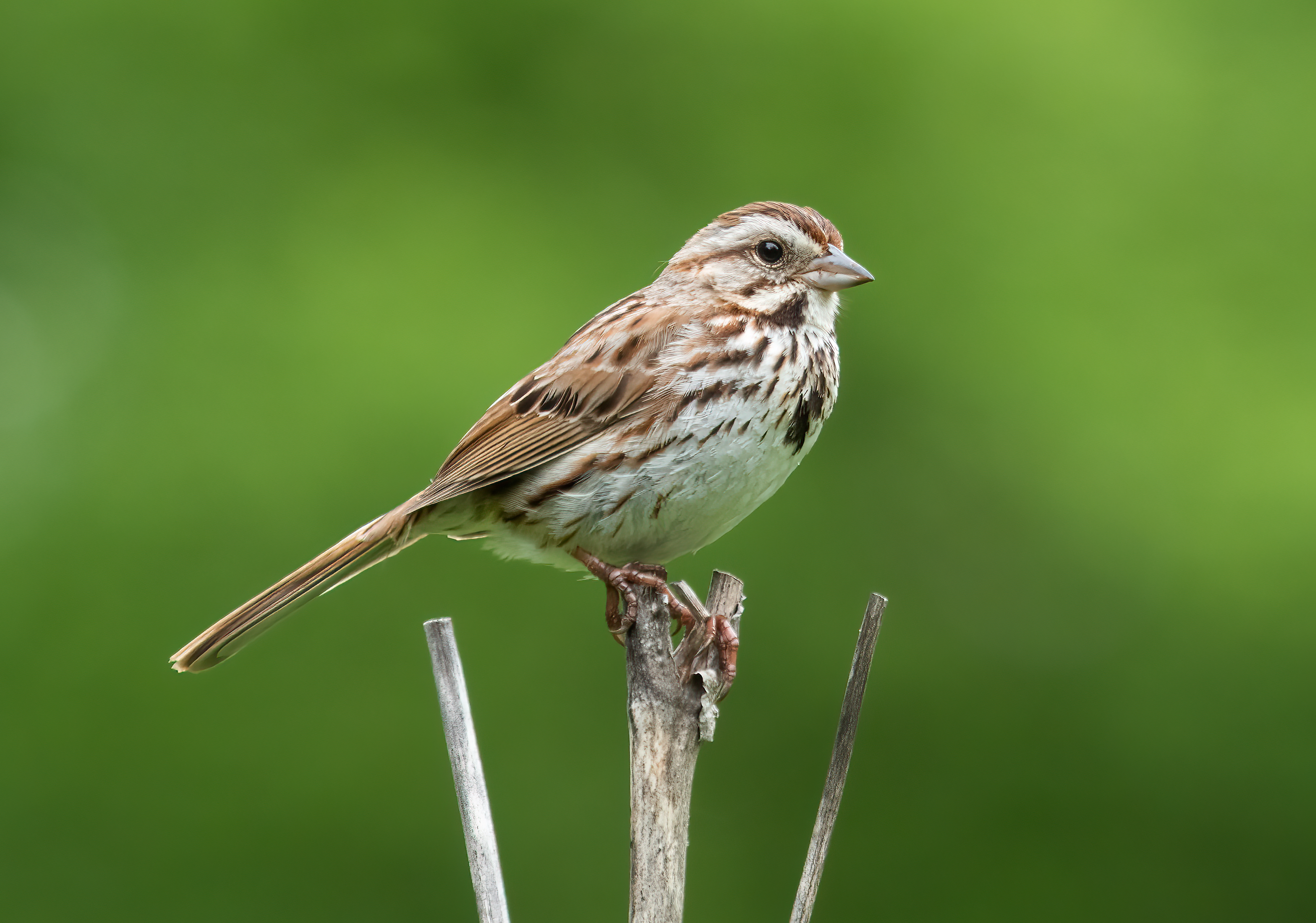Most every morning now that it’s spring, I’ve been taking my Merlin ID app out to a couple places around the yard to see who’s out there. Migration has begun for some birds, and Merlin, created by Cornell Labs, is good at capturing and identifying their songs. One recent new arrival is the song sparrow (Melospiza melodia).
These little birds are native to North America and can be found across the United States and Canada. They’re called song sparrows because of their charming and ubiquitous melodies throughout the spring and summer. Their songs vary, but are characteristic in proclaiming three or four short notes followed by a collection of trills and buzzes. Birders use this phrase to remember it: “maids, maids, maids, put on your teakettle-ettle-ettle ettle.”. The song is clear and pretty easy to identify. The young sparrow will learn 20 or more separate songs and then improvise. He will sing the same song several times before moving on to a new one in his repertoire.
At the beginning of the breeding season, male song sparrows claim and defend a small territory. As a result, a good habitat might have numerous song sparrows living as close neighbors. Their songs are not hard-wired. Instead, young males will learn the songs of older neighbors, and the males in the neighborhood will share a local song. They will use the song to identify local birds and differentiate between their neighbors and strangers. Research has discovered that males will memorize a 30-minute song cycle and then mix it up to keep the female’s attention. Females know their mate’s song and prefer the songs of their neighbors over those of strangers. It’s like having a local dialect.
Researchers have also shown that song sparrows learn from experience and by watching others. Some behavior is instinctual such as fear of owls and hawks, but, researchers believe, the fear of cats is learned.
Song sparrows have evolved into 24 subspecies suited to specific habitats, but the one we have on Owl Acres is light with dark streaks and gray cheeks, eyebrows and crown stripe. This gives them excellent camouflage in the lower bushes and brushy areas where they tend to hang out. Like other sparrows, song sparrows tend to nest near the ground, and to forage on the ground as well. They’re looking for insects and seeds. For some reason, they are susceptible to cowbirds, who delight in laying their eggs in other birds’ nests and then leaving the foster mother to take care of the chicks. We’ve noticed cowbirds in the morning chorus. Beware, little sparrow.
The song sparrow is five to seven inches long with a wingspan of seven to ten inches. The wings are broad and rounded, ideal for quick takeoff and short flight. The tail is long and rounded, and pumps up and down during flight.
Some song sparrows, like the ones returning to Owl Acres, migrate to Mexico for the winter. Others live in Mexico year-round. Our new arrivals have come from the south and may be planning to stay or may be planning to move on north. Hopefully we’ll have some who stay and charm us with their lovely song.
Photo from Wikimedia.org by Rhododendrites Alt text: Small songbird with brown and tan stripe markings, perches on a twig. Bird’s wings and tail are folded and it is seen in profile, facing to the right. Small black eye and tan, cone-shaped beak. Only the bird is in focus and the background is a blurred green color. The subject and composition of this photo have earned it “Featured” status on Wikimedia, among thousands of images on the site. Example of an unusually high-quality image, we thought it was “just right” for this article.
